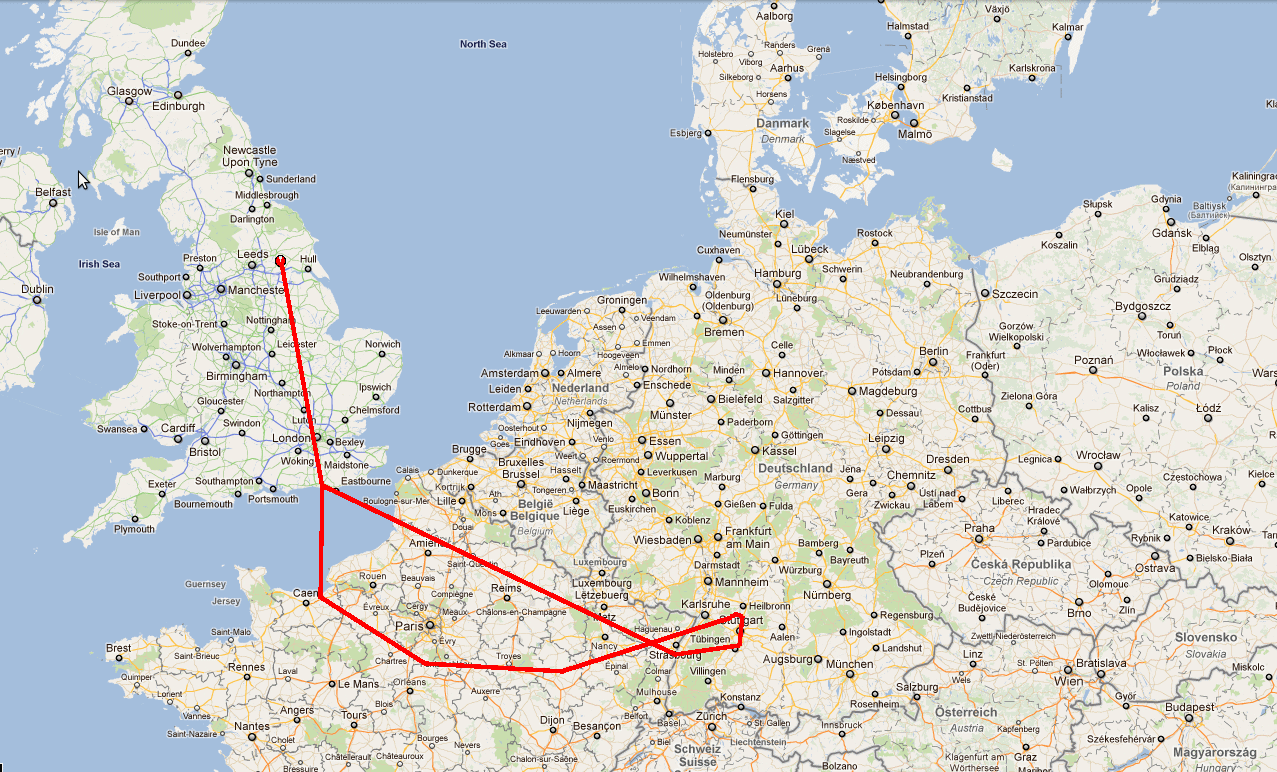|
March 1944
|
15th
|
William Uyen is still on leave after his crash so this night there is no operation planned for William.
863 aircraft - 617 Lancasters, 230 Halifaxes, 16 Mosquitos - ordered to attack Stuttgart. The German fighter controller split his forces into 2 parts. The bomber force flew over France nearly as far as the Swiss frontier before turning north-east to approach Stuttgart. This delayed the German fighters contacting the bomber stream but, when the German fighters did arrive, just before the target was reached, the usual fierce combats ensued. 37 aircraft - 27 Lancasters, 10 Halifaxes - were lost, 4.3 per cent of the force. 2 of the Lancasters force-landed in Switzerland. Adverse winds delayed the opening of the attack and the same winds may have been the cause of the Pathfinder marking falling back well short of the target, despite the clear weather conditions. Some of the early bombing fell in the centre of Stuttgart but most of it fell in open country south-west of the city. The Akademie was damaged in the centre of Stuttgart and some housing was destroyed in the south-western suburbs
88 civillians were killed in this attack and there were 203 civillians wounded.
140 aircraft - 94 Halifaxes, 38 Stirlings, 8 Mosquitos - attacked railway yards at Amiens. 2 Halifaxes and 1 Stirling lost.
22 Lancasters of No 5 Group to an aero-engine factory at Woippy, near Metz. 10/10ths cloud caused the attack to be abandoned before any bombs were dropped. No aircraft lost.
17 Mosquitos to 5 German targets and 10 Mosquitos to airfields in Holland, 2 RCM sorties, 11 Serrate patrols, 2 Stirlings minelaying off Texel, 31 aircraft on Resistance operations, 18 OTU sorties
|
Squadron 78 |
23 aircraft detailed for operations, Target Stuttgart.
March 15 1944 2 aircraft did not take off.
19 aircraft reached and attacked target.
Weather: Fine at first becoming fair to cloudy after noon.
The LV815, LW515, HX355, LV788, LW589, LV868, LW510, LW511, LW512, LK762, LV901, LW512, HW241, LV872, LV876,
LV799, LV518, LK749, LV796, LW519 and LV795 were made ready by the ground crew and managed to take off.
|
March 15th, 1944 |
Returned early |
LW518 |
returned early owing to shortage of petrol,
Fuel tranfer pomp unserviceable.
Furthest point reached between Le Havre and Cean at 49.23N/00.07E
Bombs jettisoned in the sea.
|
Returned early |
LW512 |
also returned early owing to shortage of petrol,
Fuel tranfer pomp unserviceable
Furthest point reached between Le Mans and Orleans at 48.16N/01.12E
Bombs jettisoned in the sea.
|
| |
LW876 EY-T |
The primary target was attacked and bombed at 23:34 hours from a height of 20.000 feet. Target identified by P.F.F. T.I.s. And bombed on same seen to cascade at 23:35 hours. Landed on return on Odiham owing to shortage of petrol.
|
In Combat |
LV799 EY-H |
This aircraft carried Fishpond but unfortunately H2S went
unserviceable therefore Fishpond failed to warn the crew.
Fishpond was the code name given to an extension to the British H2S airborne radar system
It was designed to give early warning of German night fighters approaching in the hemisphere below the carrying aircraft out to a range of 30 miles (48.2 km).
For as Combat report: No searchlights prior to attack. Monica unserviceable
The primary target was attacked and bombed at 23.22 hour
from a height of 21.000 feet. Good concentration of fires in
target area.
The first indication of an enemy aircraft in the vicinity was
when both rear gunner F/sgt. Schioler and M/U Sgt. Byford
observed trace coming from astern and below at
approximately 600 yards. As enemy aircraft closed into 300
yards it was identified as a M.E.109.
The LV799 went into a corkscrew to port at 600 yards and
both gunners opened fire.
Enemy aircraft opened up at 600 yards and continued firing
until he broke away at 300/200 yards to starboard quarter up
and was lost sight of.
No damage claimed at enemy aircraft but LV799 was badly
damaged in starboard wing, and tail plain.
|
In Combat |
LV519 EY-L |
The primary target was attacked and bombed at 23.28 hour
from a height of 21.000 feet. Good concentration of fires in
target area. Visibility 1-2 miles.
Flak on starboard quarter 50 yards from tail.
For as Combat report: Owing to fighter flare bursting so close to own aircraft
nothing was seen of fighter or its trace.
Fighter bullets were felt to strike own aircraft but at the same
time Flak was bursting close and striking the LV519.
A violent corkscrew was done by pilot F/O Crawford
and fighter apparently lost.
Landed on Stanton-Hardcastle on return.
|
March, 1944 |
16th |
No operations or standby for squadron 78
|
| |
17th |
No operations or standby for squadron 78
|
|
